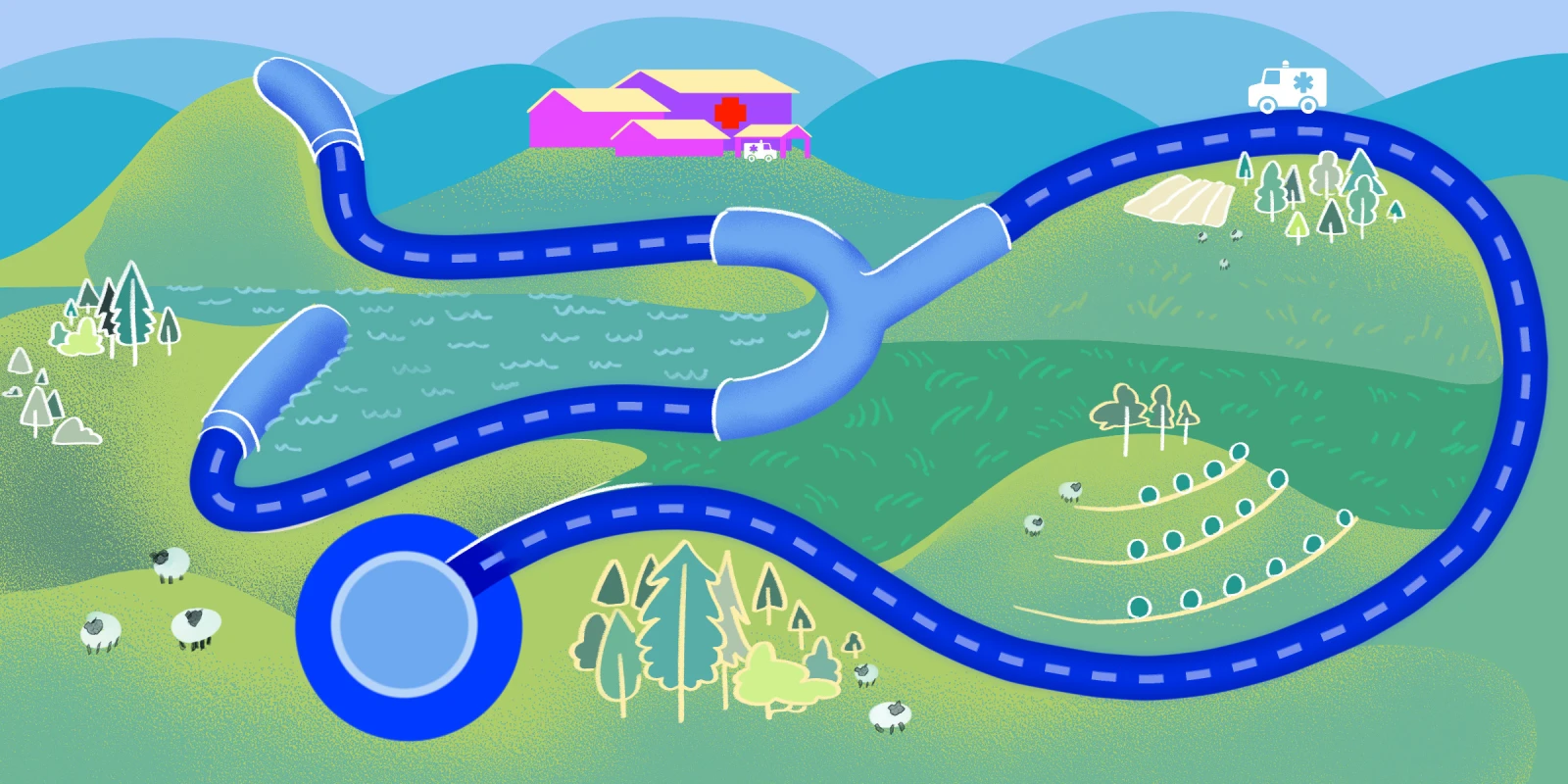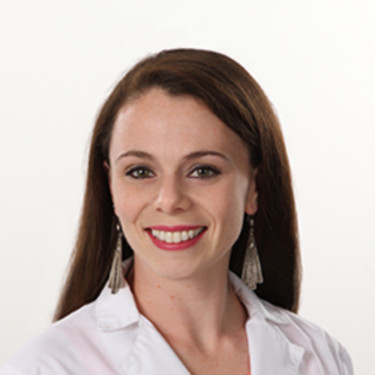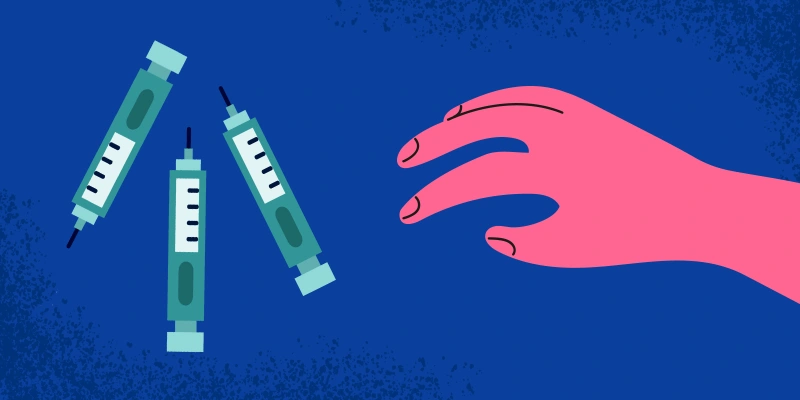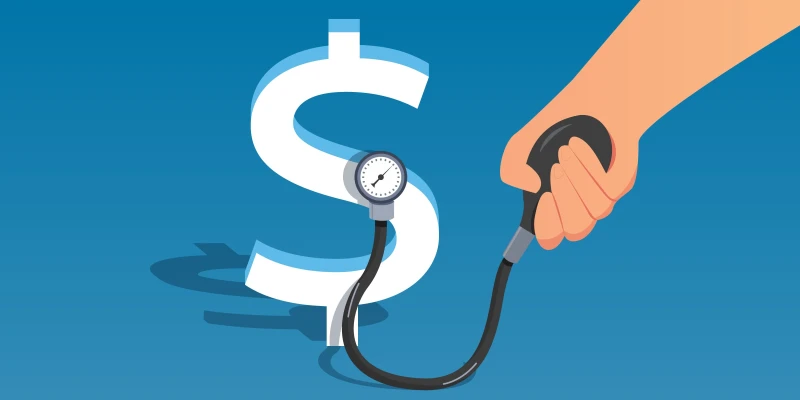As part of my global emergency medicine fellowship, I traveled to the Peruvian Amazon to participate in conducting a needs assessment of the locally available health care resources in conjunction with a local nonprofit. Much of this region of the world is only accessible by boat, and getting to a hospital can take days for those living in the most remote communities. At the end of our trip, my group embarked on a lake adventure. Our intrepid guide, we’ll call him Eduardo, carried a machete and hacked us through a muddy trail to the lake, which we canoed across. After a very full day, we got back in the canoes and returned to the community for the last of our many town meetings.
At the end of the meeting, I was asked to evaluate Eduardo, who was suffering from severe right upper quadrant pain that had started during our day’s adventure. With absolutely no medical tools, I did my best with a history and physical. His exam seemed consistent with a possible acute cholecystitis and I wanted to get him an ultrasound. By this time, it was past dark. The singular local doctor, Dr. Gabriel, was visiting a nearby town and wouldn’t be back until the next morning. Without a doctor’s written referral, we couldn’t evacuate Eduardo. Dr. Gabriel gave verbal orders for a few meds by telephone. We went to the nurse tech’s house and woke her up so she could let us into the medical center. She gave Eduardo IV scopolamine and omeprazole. They didn’t have any IV pain medication.
In the morning, Dr. Gabriel returned and evaluated Eduardo, giving him IV antibiotics. Eduardo didn’t meet criteria for emergency boat or air evacuation, and we discussed viable options for getting him to a place that could ultrasound him. The nearest ultrasound machine was several hours away at a community health center in Juancito, but that site had no surgical capabilities, so an ultrasound would be purely diagnostic and if positive, he would still need to be evacuated to a hospital in Contamana. My group had already borrowed a boat to travel to Contamana en route home and the decision was made to bring Eduardo with us. As it was the 20th of the month, the only regional surgeon would be fortuitously visiting Contamana for his 10-day monthly stretch, if surgery was ultimately necessary.
The next hurdle was that Eduardo needed his identity and insurance documentation to bring with him to the hospital. There was a several hour delay in obtaining legitimate copies from a local official for Eduardo to bring along. By the time we were ready, it was about four hours later than our intended departure time and torrentially down pouring. Our borrowed boat was much like the not-yet-in-use river ambulances we were working to get up and running, with five seats plus a driver’s seat. Our motorista pulled a three-legged wooden stool — think Laura-Ingles-Wilder-milking-a-cow type of stool — on board to sit on. Due to the rain, the motorista had pulled the overhead hatch down to rest on his head without quite making contact with the boat’s front door, so that only a few inches of space existed at eye level for him to see out. He had to awkwardly reach down and behind him to navigate the river with the steering wheel.
Rain seeped in through all the window edges and the motorista’s eye-sight crack. We were all aware that we would not reach our destination during daylight, having departed so late. Despite sitting next to the window, I couldn’t see anything in front of us, just rain coating the glass. Every time we abruptly stopped to add fuel to the engine with no warning or announcement, I thought the boat was dead, we were doomed, and I wished there was a paddle aboard. Checking in with Eduardo’s pain, he looked utterly miserable but remained stoic. All we had was acetaminophen and ibuprofen to offer him, though technically speaking, he should have been NPO.
About an hour after complete darkness set in, the motorista rummaged around in the back of the boat for a handheld flashlight. He returned to the front and had to open the overhead hatch higher so that he could hold the flashlight in the crack. His clothing was saturated. I was doing my best to suspend thoughts of our imminent demise by dropping breadcrumb pins with my Garmin GPS tracker. After several U-turns, it became evident we were lost. It seemed we had gone off the main river into a dead-end side tributary. I felt like we were doing futile donuts in the boat, expending our remaining fuel. I watched as Eduardo’s pain and nausea increased. Eventually we made it back to the main river and were back on the right track.
Upon arrival in Contamana, we took Eduardo directly to the ED, where we negotiated my passage through the security gate with the excuse of me being “the patient’s doctor.” I am fully aware I was exploiting my white privilege in this endeavor. After showing Eduardo’s hastily obtained insurance paperwork and Dr. Gabriel’s handwritten carbon-copy transfer paperwork, a tech took Eduardo’s vitals. No fever, but soft blood pressure and borderline tachycardia. He was moved to a triage room where a nurse obtained IV access. I asked if he would be able to get a right upper quadrant ultrasound that night, and the answer was that no one present knew how to use it. I offered to do it myself, but then it became hazy about where the machine actually was. He did get IV fluids, pain meds, and antibiotics. A doctor would see him the next morning, and I was dismissed.
Updates throughout the following day revealed delays in obtaining an ultrasound, EKG, labs, and a physician evaluation. The ultrasound was read as negative that afternoon. The EKG machine was out of paper and the labs couldn’t be drawn until the following day. Eduardo was discharged and returned the next day for the remainder of his work-up. He waited there all day as the only doctor in the hospital was caught up with an emergency delivery and couldn’t sign the lab requisition. Ultimately, Eduardo’s labs and EKG were unremarkable. He was diagnosed with possible hand-wavy gastritis vs. muscle strain and embarked on the return journey to his community, the culmination of a four-day work-up. A work-up I am accustomed to achieving in two hours. Abysmal door-to-dispo metrics.
Our needs assessment included the identification of many barriers to health care for members of the communities in the Peruvian Amazon. In collaboration with a local nonprofit, we hope to improve access to care by developing a river ambulance system to help evacuate patients more efficiently and safely. However, another important barrier to health care is the stark lack of human and material resources in the communities themselves. If there were more clinicians in the remote communities, patients could be triaged appropriately, avoiding the need for frequent, lengthy, and expensive evacuations. Eduardo happened to live near the only community health center that was staffed by a physician (at the present time, there is no longer a physician in this community). If Dr. Gabriel had been able to perform a point-of-care ultrasound, our entire (mildly terrifying) journey could have been avoided.
While this may seem like a drastic example of limited access to health care, I think it is comparable to, and potentially prophetic of, the trend we are now seeing in America of closing rural community hospitals and centralizing health care in large cities. According to the American Hospital Association’s 2021 report, 136 rural hospitals closed between 2010 and 2021, with more projected closures on the horizon. While the reasons for these closures are immensely complex, the oversimplified bottom line is money. It may make immediate economic sense to centralize health care, but the long-term human and resource costs must also be considered. A systematic review on the impacts of rural hospital closures demonstrated EMS transport times (from patient pick-up to hospital) were lengthened by approximately 11 to 15 minutes. In many medical emergencies like trauma, stroke, and STEMI, minutes matter, and increased transport time is known to increase mortality. Not only does closing rural hospitals worsen health outcomes for patients, but it stalls economic growth, decreases employment opportunities in the community, and worsens poverty.
In the long term, rural hospital closures can only lead to increased health care costs or mortality, but most likely both. Our already strapped EMS services are often run by volunteers in rural communities. In my community hospital, I frequently need to transfer patients to our system’s larger hospital, and patients can wait for hours, sometimes even longer than my entire eight-hour shift, before an ambulance becomes available to transfer them because we don’t have enough transport teams. With fewer rural hospitals, ambulances will be tied up on any given call for longer, leaving the rest of the community vulnerable. Closing rural hospitals will necessitate a bolstering of our EMS systems, purchasing more vehicles, and hiring more staff, but we will still see worsening patient outcomes as EMS cannot provide definitive care.
Many of our inner-city hospitals don’t have the capacity to take on this greater patient volume and will need to expand in both space and staff. All these changes will take time, money, and human resources that quite frankly don’t exist. Not to mention the added expense and stress for patients needing to travel and eventually return home from distant hospitals, and the delays in diagnosis and treatment for life-threatening emergencies. While recognizing there are innumerable obstacles to improving rural health care access locally and globally, we should still be moving toward equity in access health care, not away from it.
What do you think will be the outcome of closing rural hospitals? Share in the comments.
Dr. Jenny Jones is a global emergency physician in Massachusetts. She enjoys dancing, aerial arts, and drawing silly anecdotal cartoons. She is a 2023–2024 Doximity Op-Med Fellow.
*Names have been changed to maintain privacy.
Illustration by April Brust







